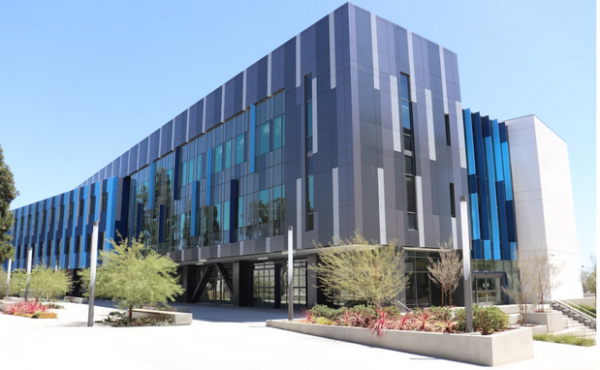The American workplace is in the midst of a transformation. Gone are the days of sprawling office spaces filled with rows of cubicles. Today’s work environment is being reshaped by a new reality: under-utilized office space. The rise of remote work during the pandemic has fundamentally altered how we work, leaving many companies grappling with vast swathes of unused square footage.
This trend is reflected in a recent report by Robin Powered, a space management software company. Their survey of over 500 business owners and facilities managers found that a staggering 80% of offices have reduced their square footage since the pandemic. This downsizing trend shows no signs of abating, with 75% of businesses planning to further reduce their office space in 2024.
But why are companies shedding office space at such an alarming rate? The answer lies in the dramatic shift towards remote work. With employees adept at working productively from home, companies are re-evaluating the need for expansive office spaces. A report by Avison Young, a commercial real estate services firm, confirms this. Their data shows that U.S. office leasing activity has fallen significantly in Q1 2024, dropping 36.1% below the pre-pandemic average.
The under-utilization of office space presents a significant challenge for companies. Maintaining vast, unused spaces translates to a financial burden in the form of rent, utilities, and maintenance costs. Companies are being forced to confront the inefficiency of these traditional office setups and seek more cost-effective solutions.
However, this downsizing trend is not without its repercussions. Concerns are being raised about the potential negative impacts on company culture and collaboration. For many employees, the office serves as a hub for social interaction, brainstorming sessions, and fostering a sense of team spirit. Remote work, while offering flexibility, can lead to feelings of isolation and hinder the exchange of ideas that often flourishes in a shared workspace.
So, what does the future hold for American office spaces? It’s likely that we will see a hybrid model emerge, where office space is used strategically to supplement remote work. Companies may utilize offices for essential in-person meetings, team-building exercises, and client interactions. The focus will likely shift from quantity to quality, with companies investing in creating collaborative and inspiring workspaces that entice employees to come into the office.
Here are some of the key takeaways from this trend:
- The rise of remote work has led to a significant decrease in office space utilization.
- Companies are downsizing their office footprints to reduce operational costs.
- There is a growing concern about the impact of remote work on company culture and collaboration.
- The future of office space is likely to be a hybrid model that combines remote work with strategic use of physical workspaces.
Looking Ahead: Embracing the Hybrid Workplace
The downsizing of office spaces presents both challenges and opportunities for American businesses. By embracing the hybrid workplace model and strategically utilizing office space, including coworking office space, companies can create a work environment that fosters productivity, collaboration, and employee satisfaction in the post-pandemic era.
Here are some steps companies can take to thrive in the hybrid workplace:
- Invest in Collaboration Tools: Equip employees with the necessary video conferencing, project management, and communication tools to facilitate seamless collaboration, regardless of location.
- Design Inspiring Workspaces: Create office environments that are conducive to creativity, teamwork, and social interaction. This could involve incorporating open floor plans, comfortable meeting spaces, and break areas that encourage employees to connect.
- Promote a Culture of Flexibility: Develop policies that support flexible work arrangements and empower employees to manage their work schedules effectively.
- Focus on Employee Well-being: Prioritize employee well-being by offering programs that promote mental and physical health, both in the office and at home.
By taking these steps, companies can navigate the changing landscape of office space utilization and create a thriving hybrid workplace that benefits both the organization and its employees.
Effect on Coworking Office Space
The rise of remote work and companies downsizing office space presents a complex situation for coworking centers. There are potential benefits and challenges to consider:
Benefits for Coworking Centers:
- Cost-Effectiveness for Businesses:
In a scenario where companies need less space, coworking spaces offer a compelling alternative to traditional leases. They provide:- Flexibility: Companies can rent exactly the amount of space they need, and scale up or down quickly as their needs change. This is a major advantage in a volatile economic climate.
- Reduced Overhead: Businesses avoid the significant upfront costs associated with traditional office setups, such as furniture, utilities, and maintenance. This can be a major advantage for companies looking to tighten their belts.
- Increased Demand for Hybrid Work Solutions: Many companies are adopting hybrid work models, where employees split their time between home and the office. Coworking spaces can cater to this by offering:
- Meeting Rooms and Collaboration Spaces: Companies can use coworking spaces for essential in-person meetings, team projects, and client interactions, without the burden of maintaining a full-time office.
- Professional Work Environment: Coworking spaces offer a professional atmosphere that can be more conducive to focused work than a home office.
Challenges for Coworking Centers:
- Reduced Demand from Freelancers and Startups: Freelancers and startups are a core customer base for coworking spaces. Economic downturns often hit these groups the hardest. If they experience financial difficulties, demand for coworking space could decline.
- Competition from Traditional Landlords:
With increased office vacancy rates, traditional landlords may offer more flexible lease terms to compete with coworking spaces. This could put pressure on coworking center pricing and occupancy rates.
The Overall Outlook:
The future of coworking centers depends on their ability to adapt to the changing landscape. Here’s what might unfold:
- Consolidation: Weaker coworking spaces with limited offerings may struggle to survive.
- Adaptability is Key: Coworking centers that can cater to the needs of companies looking for flexible workspace solutions and cater to hybrid work models will likely thrive. This could involve:
- Offering Specialized Services: Providing amenities like business support services, networking events, or on-site childcare can add value and attract new customers.
- Building a Strong Community: Creating a vibrant and collaborative atmosphere can differentiate coworking spaces and foster long-term membership.
While the downsizing of office space presents a challenge, coworking centers that adapt to the needs of companies and remote workers have the potential to emerge stronger. By focusing on flexibility, cost-effectiveness, and creating a valuable work environment, coworking spaces can play a crucial role in the evolving landscape of the American workplace.


